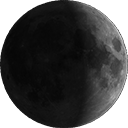Groundhog Day Rituals

This day marks not only the groundhog’s weather prediction of an early or late spring, but also the welcoming of the warmth and light of the sun’s return after a long winter. It is one of the four fire festivals marking the transition point from winter to the beginning of planting season. Imbolc marks a time of new beginnings.
The rituals of Imbolc use fire and flame to represent the renewing strength of the sun. Traditionally on this day, every light in the house is lit at sunset or after ritual to honor the sun’s return.
Since this day is also known as Brigid’s day, rituals usually include paying tribute to the goddess. On this day Wiccans may light different colored candles, a white one for Brigid and yellow or red for the god to mark the passing from winter back into the light. This time is often used for initiations as well.
Imbolc also marks the festival of calving and so appropriate foods for ritual may include forms of dairy. Also hot foods and spices can be included to honor the power of the sun. Since it is still winter, white flowers or a bit of snow can be used on altars as well.
As a festival of fertility, it is a good time for Imbolc rituals that promote growth in any form. Seeds and buds may be used to represent the new life that springtime often brings. A common part of ritual on this day is to prepare a Brideog, a straw doll traditionally dressed in white and kept on the altar for the rest of the year as a reminder of this important festival.
